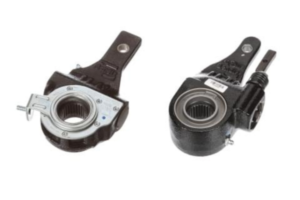To find training resources for automatic slack adjuster installation, seek out videos and manuals from reputable manufacturers. Online forums and vocational schools also offer guidance and hands-on experience.
Professional maintenance teams understand that efficient brake systems are critical for vehicle safety. Ensuring proper installation of automatic slack adjusters is a pivotal skill for mechanics. Trucking companies, independent operators, and educational institutions prioritize this training. Resources are widely accessible and tailored to varying levels of expertise, from beginners to seasoned professionals.
Utilizing multimedia resources, like instructional videos and step-by-step guides created by auto parts manufacturers, mechanics can grasp the installation procedure. Trade schools offer courses that combine theory with practical application, granting a clear understanding of the slack adjuster’s role within the braking system. Auto repair professionals and enthusiasts can sharpen their skills through these comprehensive platforms, ensuring they keep pace with evolving automotive industry standards.
Introduction To Automatic Slack Adjusters
Trucks and heavy-duty vehicles rely on precise brake systems for safety. A critical component of these systems is the automatic slack adjuster. This device ensures brakes work correctly, maintaining the proper distance between brake shoes and drums.
What Is An Automatic Slack Adjuster?
An automatic slack adjuster, often abbreviated as ASA, is a device in a vehicle’s braking system. It automatically maintains the correct tension on the brake shoes, which helps to stop the vehicle effectively.
How Does It Work?
The automatic slack adjuster relies on a simple yet ingenious mechanism. When the brake is applied, the ASA adjusts the brake shoes to compensate for wear. This action ensures consistent braking performance, regardless of the shoes’ condition.
- Monitors brake actuation: the ASA senses the movement of the brake actuator.
- Detects slack: It detects when there is too much gap between the brake shoe and drum.
- Adjusts brake shoes: If excess slack is present, it automatically tightens the brake shoes.

Types Of Automatic Slack Adjusters
Understanding the different Types of Automatic Slack Adjusters is crucial. These components ensure that brakes operate efficiently. They automatically maintain the correct tension on the brake shoes. This results in consistent braking performance. Here’s a closer look at the three main types used in the industry.
Standard Stroke Asa
The Standard Stroke Automatic Slack Adjuster (ASA) is a common choice for many vehicles. It provides reliable brake performance and is simple to maintain.
- Maintains safe distance between the brake drum and lining
- Reduces the need for manual brake adjustments
- Easy to install and common in medium-duty applications
Long Stroke Asa
For heavy-duty use, Long Stroke ASA steps in. It offers greater adjustability for more demanding brake systems.
- Enhanced adjustability for heavy loads
- Longer lifespan under tough conditions
- Designed for heavy-duty vehicles
Low-hysteresis Asa
Low-Hysteresis ASAs are precision-focused. They prevent over-adjustment and under-adjustment. This type ensures a smoother braking experience.
- Reduces risk of brake drag or excessive clearance
- Low hysteresis for precise control
- Ideal for applications requiring high accuracy
Training Requirements For Automatic Slack Adjuster Installation
Training Requirements for Automatic Slack Adjuster Installation are vital for proper vehicle maintenance. Technicians should master the correct procedures to ensure operability and safety. Specific training includes understanding various models, using the right tools, following safety protocols, and testing the equipment post-installation.
Tools Required For Automatic Slack Adjuster Installation
Installation begins with the right set of tools. Technicians need:
- Wrench set for adjusting and securing components
- Slack adjuster puller to disconnect old adjusters
- Anti-seize compound to protect threads
- Torque wrench for precision tightening
Safety Precautions
Safety is non-negotiable.
- Wear gloves to protect hands from sharp edges
- Use safety glasses to shield eyes from flying debris
- Ensure proper lighting to see all components clearly
- Chock wheels to prevent the vehicle from rolling
Installation Procedure
Follow these steps:
- Remove the existing slack adjuster using the puller
- Clean the spline, apply anti-seize, and align the new adjuster
- Install the new adjuster, hand-tighten the locknut, and use the torque wrench
- Connect air chamber pushrod to the slack adjuster
Testing And Validation
After installation, ensure correct operation:
- Check air pressure and build it to a normal level
- Apply brakes multiple times to check adjuster settings
- Measure pushrod travel, confirming it’s within specifications
- Inspect for leaks in the air system
- Test drive the vehicle for real-world operation
Pre-installation Checks
Before installing an Automatic Slack Adjuster, it’s vital to perform thorough checks. These checks ensure safety and efficiency. Let’s break down what each one entails.
Visual Inspection Of Brake System Components
Start with a detailed inspection. Look closely at all brake components. Check for wear, damage, or abnormalities. Focus on the brake shoes, drums, and adjoining parts. They should appear intact without cracks or extreme wear.
Measuring Pushrod Stroke
Pushrod stroke length is critical. It tells you if the brakes apply and release properly. Use a ruler to measure the stroke. Keep the reading precise. Check manufacturer specifications to ensure it falls within the safe limit.
Measuring Chamber Size
Identifying the correct chamber size is necessary. The chamber size dictates the slack adjuster you’ll use. Measure the diameter and length of the brake chamber. Use these measurements to choose the right slack adjuster model.
Air System Pressure Checks
The air system must maintain appropriate pressure. Connect a pressure gauge to the system. Check for steady readings. Air pressure should be consistent with vehicle requirements. Any drop in pressure indicates leaks or other issues.
Check Type | Description | Tool Used | Specs Reference |
Visual Inspection | Examine brake parts | Eyes/Flashlight | Service Manual |
Pushrod Stroke | Ensure proper brake application | Ruler | Adjuster Specs |
Chamber Size | Determine correct adjuster | Tape Measure | Adjuster Specs |
Air Pressure | Check for leaks, pressure loss | Pressure Gauge | Vehicle Specs |
Installation Of Automatic Slack Adjusters
Keeping your truck in top shape includes upgrading to automatic slack adjusters (ASAs). These vital components are crucial for brake performance and safety. This guide will walk you through each step of installing ASAs on your truck, ensuring you’re ready to hit the road with confidence.
Removing Old Slack Adjusters
Start with a clean workspace and the right tools. Safety is key, so chock the wheels and release air pressure in the brake chamber before beginning.
- Remove the cotter pin and clevis pin from the old adjuster.
- Use a suitable wrench to unbolt the adjuster.
- Take off the old slack adjuster carefully.
Preparing The New Automatic Slack Adjusters
Before installation, ensure your new ASAs are set for your specific vehicle. Refer to the manual for preparation steps.
- Check ASA for any shipping damage.
- Lubricate moving parts as recommended.
- Adjust the ASAs to the correct installation angle.
Installation Of The New Automatic Slack Adjusters
Correct installation is critical for brake efficiency. Align and attach the ASA to the S-cam shaft with care.
- Install the new ASA onto the S-cam shaft.
- Re-insert the clevis pin and secure it with a new cotter pin.
- Torque the adjusting mechanism bolt per the manufacturer’s specifications.
Adjustment Of The Asa
A properly adjusted ASA ensures that brakes apply smoothly. Follow the manual’s adjustment procedure for optimal performance.
- Rotate the adjuster until the brake shoes contact the drum.
- Back off the adjuster as instructed for the correct clearance.
- Confirm that the brake is free and not dragging.
Final Checks And Validation
Completing the installation requires thorough checks. Ensure your ASA is installed correctly with these final steps.
- Check for proper clevis pin engagement.
- Inspect the brake chamber push rod travel.
- Test the brake application and release.
- Review all components for secure fittings.
- Document the installation details as per regulation.
Regular maintenance and checks keep your ASAs functioning smoothly. Always consult a professional for complex issues.
Common Problems And Troubleshooting
Automatic Slack Adjusters (ASA) are crucial for effective brake systems. They maintain optimal brake performance by adjusting for wear. But sometimes issues arise, such as incorrect operation, noise, or poor brake performance. It is essential to troubleshoot these problems promptly. Let’s explore some common issues and their solutions.
Asa Not Operating Correctly
When an ASA fails to adjust, it might be from incorrect installation or lack of maintenance. Follow these steps:
- Check the installation – Make sure the ASA is installed according to manufacturer guidelines.
- Inspect for damage – Look for any wear or breakage on the ASA or related components.
- Lubricate the ASA – Apply suitable lubricants to moving parts.
- Consult the manual – Review troubleshooting sections in the service manual for specific advice.
Asa Makes Noise During Operation
Should noises occur during ASA operation, don’t ignore them. This could signal a problem:
- Examine the ASA – Check for loose components or signs of wear.
- Adjust if necessary – Follow manual instructions for making adjustments.
Excessive Pushrod Stroke
An ASA with excessive pushrod stroke might lead to brake issues. Key steps include:
- Measure the stroke – Use a ruler to measure the pushrod stroke length.
- Compare to specs – Ensure measurements align with the manufacturer’s specifications.
- Adjust accordingly – Perform adjustments as outlined in the service guide.
Poor Brake Performance
Issue | Possible Cause | Solution |
Weak braking | Glazed brake shoes | Replace or refinish the shoes |
Uneven braking | Unequal adjustment | Adjust all ASAs to the same setting |
Long stopping distance | Air system leakage | Check for leaks and repair |
Maintenance And Inspection Of Automatic Slack Adjusters
Keeping automatic slack adjusters (ASAs) in top shape is crucial. These components ensure brakes apply correctly every time. Regular maintenance and inspection prevent failures and improve safety. Here’s how to maintain and inspect your ASAs efficiently:
Cleaning And Lubrication
Cleanliness and proper lubrication are the foundation of ASA longevity. Dirt and road grime can impair an ASA’s function. Use these steps:
- Wipe away external grime with a damp cloth.
- Apply a quality lubricant to moving parts.
- Ensure no debris clogs the adjuster mechanism.
Periodical Inspection
Regular checks catch issues early. Inspect ASAs every 10,000 miles or every three months. Look out for:
- Wear and tear on the adjuster itself.
- Potential air system issues.
- Proper adjustment function.
Part Replacement
Parts wear out over time. Replace them before they fail:
Part | Signs of Wear | Action |
Clutch | Slipping or noise | Replace |
Springs | Loss of tension | Replace |
Gears | Visible wear or chips | Replace |
Asa Maintenance Checklist
Follow this summary for ASA upkeep. Tick off each task during routine inspections:
- Visually inspect for signs of damage.
- Check operation smoothness.
- Ensure proper brake adjustments.
- Inspect air pressure levels.
- Verify clevis pin connections.
Regular maintenance guarantees safe braking. No detail is too small. Keep ASAs in check to ensure road safety for everyone.

Importance Of Proper Training For Asa Installation
Ensuring the correct installation of Automatic Slack Adjusters (ASA) is crucial. It affects overall vehicle safety and performance. Proper training empowers technicians with the knowledge they need. This includes the understanding of precise adjustment techniques and troubleshooting skills. A profound grasp of ASA installation heightens road safety and operational efficiency. It also complies with legal standards.
Reduced Risk Of Accidents
Accidents often stem from brake failures. Brake failures may result from improperly adjusted slack adjusters. Proper training ensures brakes remain in top condition. This promotes safety on the roads.
Increased Efficiency And Performance
Efficient ASA installation boosts vehicle performance. It ensures that brakes have optimal response times. This leads to smooth and reliable vehicle operation.
Lower Maintenance And Replacement Costs
Correct installation helps avoid repeated maintenance. It also prevents premature part failures. This saves money on repairs and replacements over time.
Compliance With Government Regulations
Government regulations often mandate proper brake functionality. Training ensures that ASAs comply with these regulations. Non-compliance can result in fines and penalties.
Benefits Of Using Automatic Slack Adjusters
Automatic slack adjusters transform the health of heavy-duty vehicles’ braking systems. They manage the brake stroke to maintain high performance. These devices deliver key benefits that keep trucks and buses rolling safely and efficiently. Let’s explore these advantages.
Improved Braking Performance
Consistent brake adjustments are crucial for any vehicle. Automatic slack adjusters self-regulate to ensure optimal braking. This leads to a smoother and more reliable brake application. It eliminates the guesswork and the need for manual brake adjustments.
Reduced Downtime And Maintenance Costs
Drivers can focus on the road, not brake adjustments, with automatic slack adjusters.
- Fewer manual inspections and adjustments needed.
- Less wear and tear on brake components.
- Longer part lifespans, reducing replacement frequency.
Increased Reliability
With automatic slack adjusters, brakes remain consistent and dependable. This reliability is vital for long-haul trips where unexpected delays can impact delivery schedules.
- Brakes stay in top condition without manual intervention.
- Helps prevent brake-related road failures.
Improved Safety
Safety is paramount. Automatic slack adjusters play a significant role in preventing brake failures. Well-adjusted brakes mean better control and a far lower risk of accidents due to brake issues.
Regular maintenance is still crucial but becomes less frequent. Moreover, these devices help comply with safety regulations, further protecting drivers and their cargo.
Conclusion
As we wrap up our exploration of automatic slack adjuster installation training resources, remember reliability is key. Mastery of correct installation techniques leads to safer vehicles and peace of mind. Let these resources guide you towards expertise and ensure roadworthiness.
Stay informed and drive safely.
Related Article
Read Now
How Much Free Play Should You Expect in a Slack Adjuster? Maximize Performance!
The ideal amount of free play in a slack adjuster...
Read MoreRevolutionary Evolution: Historical Development of the Automatic Slack Adjuster
The automatic slack adjuster (ASA) has developed over time to...
Read MoreCustom Solutions for Automatic Slack Adjuster Systems: Boost Safety & Efficiency
Custom Solutions for Automatic Slack Adjuster Systems enhance braking consistency...
Read MoreAutomatic Slack Adjuster Warranty And Repair Information: Quick Guide
Automatic Slack Adjusters come with various warranty conditions, which typically...
Read More



